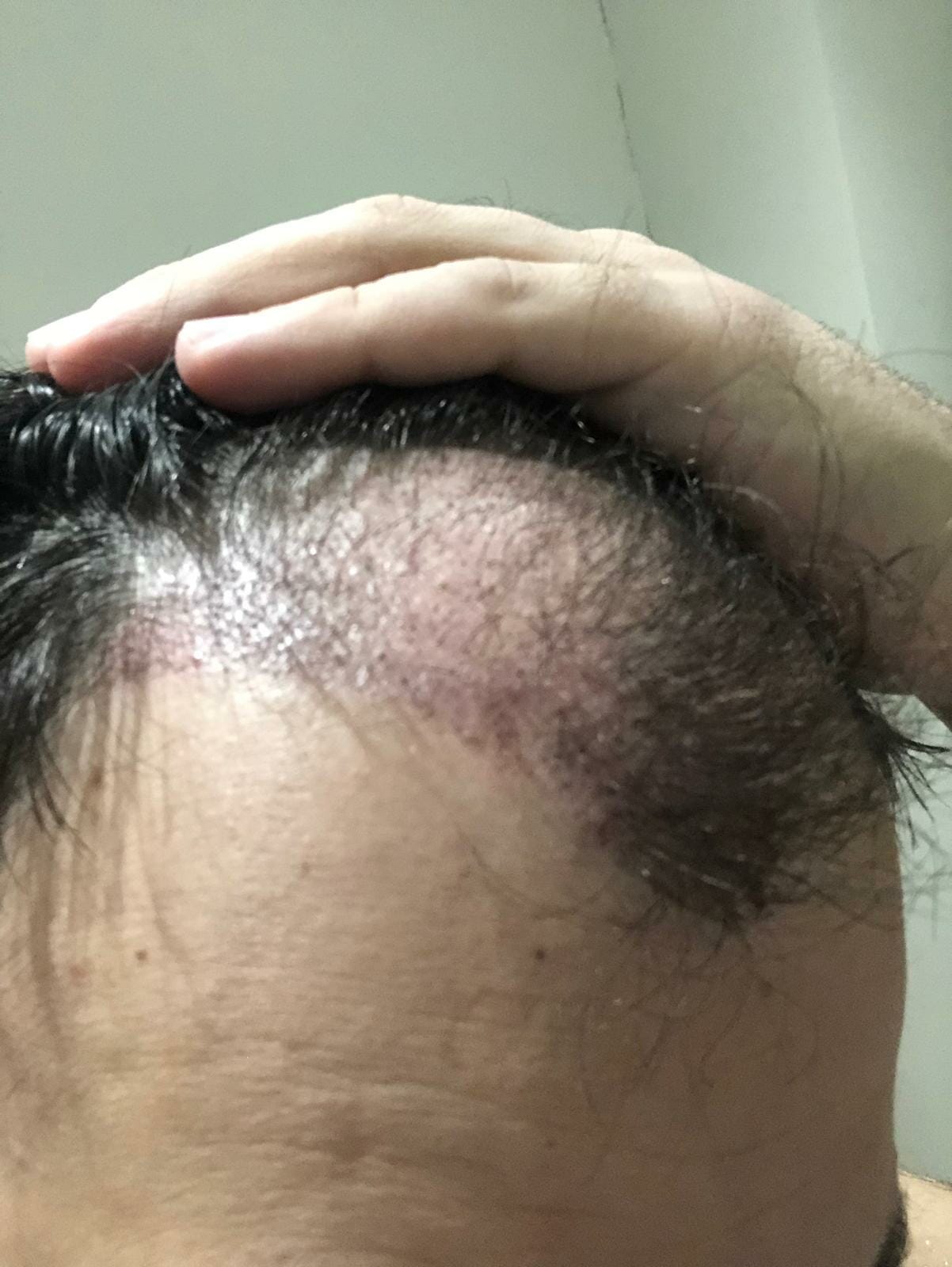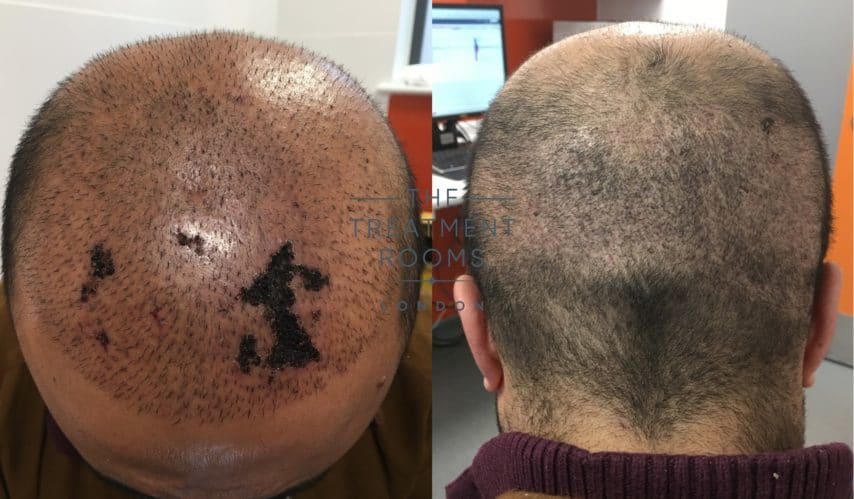What You Need To Know About Redness After A Hair Transplant
Redness is common after having an FUE hair transplant. It normally goes away with time but in some cases you may need treatment. Redness is seen in both the skin and the scabs that form around the transplanted grafts. This blog will help you understand more about the redness and what this means for your recovery. At The Treatment Rooms London we always like to check on our patients to see how they are recovering as part of our FUE hair transplant aftercare programme. One of the key questions is how much redness they have after surgery?
What is redness after a hair transplant?
The red colour of your skin after your hair transplant can be seen at the back of your head (donor area) and where hairs have been implanted (recipient area). Also called, “erythema”, it is simply inflammation following your hair transplant. This inflammation is in keeping with a normal recovery. As surgery involves making small cuts into your skin, these cuts will start to heal at the back and around your newly implanted hair. The processes that contribute to healing cause redness and that’s why you see it.

Redness Hair Transplant
How long does the redness last?
Many patients may find that their redness is completely gone after 2 weeks. As your scalp starts to heal the redness should reduce. Most hair transplants heal quickly within 10-14 days. However, in some large hair transplant cases this healing process can take longer. As a result it can take a while and even up to a month for redness to completely go away.
Will it affect my transplant?
Normal healing related redness should not affect your transplant. However, in some cases redness isn’t caused by normal healing and you will need to see your surgeon to check your recovery. These causes are listed below:
- Folliculitis (hair infection)
- Cellulitis (skin infection)
- Cysts (small round swelling under the skin)
- Skin necrosis (dead and dying skin)
All the above can affect your donor area or recipient area after a hair transplant and therefore we advise you keep an eye out for them. Their common symptoms and signs are detailed below as well as our recommended treatment.
Folliculitis
Some patients may suffer from an infection around the newly implanted hair follicles. The risk of this occurring can last up to 8 months. You can see folliculitis has small red pimples forming around each hair even with a small pus (yellow) head. It can feel hot, itchy and painful. This is actually a fairly common condition after a hair transplant. The cause can be due to a bacterial infection (10%) but in many cases bacteria aren’t found (23%), (1).
Treatment is simple and effective. You can leave it alone and it will gradually resolve by itself. However, we recommend you see your surgeon to get it properly looked at. You might benefit from warm compresses or a course of antibiotics/ antibiotic cream to help fight any bacteria that could be there. Be sure to keep your scalp as hygienic as possible to prevent any further problems of infection, (2).
Cellulitis
Cellulitis involves an infection of the skin on your scalp, (3). After undergoing a hair transplant your skin is at risk of bacteria finding their way in and causing an infection. If you have cellulitis you will notice your redness may start to spread, your scalp feels painful and you may even develop a fever.
If you have these symptoms it is important you see your surgeon immediately. A course of antibiotics and daily monitoring to make sure your infection is improving should fix this problem. You will know your skin infection is getting better if the redness stops spreading and eventually disappears.
Cysts
Cysts are small circular sacks that grow under the skin. They can occur at your donor or recipient area. They are caused by a number of potential factors including grafts not being taken out of the donor area or implanted properly. Cysts can also be caused by your skin healing abnormally. You can see cysts as they swell, become red and they are painful, (1).
If you think you are suffering from cysts then please see your surgeon. Treatment is straightforward. Your surgeon may decide to take out the cyst or advise you to use warm compresses on the area. Your surgeon may choose to start you on a course of antibiotics if needed.
Skin Necrosis
Skin necrosis is a condition where you skin is dead or dying. This is a complication that should never happen as it suggests poor surgical skill by your surgeon. It looks like a deep scab on your skin and it can appear at the back of your head or where hairs have been implanted. It can appear within the first 2-4 weeks after having surgery. You may notice your skin start to look dusky or purple in colour before the skin starts to die and go black. A picture below is an example of what skin necrosis looks like.

On the left you can see areas of skin necrosis represented by deep dark scabs
If you notice you have any of these signs in your skin you must see your surgeon immediately. You will need to have your necrotic skin removed. The area will scar and no hair will grow there unless you choose to have fat grafting and a second hair transplant procedure.
Itching and Redness
As we have mentioned before, itching is common after your transplant, (click here to read blog). Itching can affect your donor or recipient area following your hair transplant. It can be treated easily and you must see your surgeon if you continue to itch after 2 weeks. Itching can delay healing and in some serious cases it can affect your hair transplant results. It is a common cause of redness after 4 weeks.
Still worried about redness after your hair transplant?
Suffering from cellulitis (skin infection)? Read here to find out more about what the NHS recommends for treatment.
Suffering from folliculitis (hair infection)? Read here to find out more about what the NHS recommends for treatment.
You can read more about the side effects of a hair transplant in our blog.
If you are looking for a hair transplant clinic in London, find out more and book your consultation today.
References
Book A Consultation

